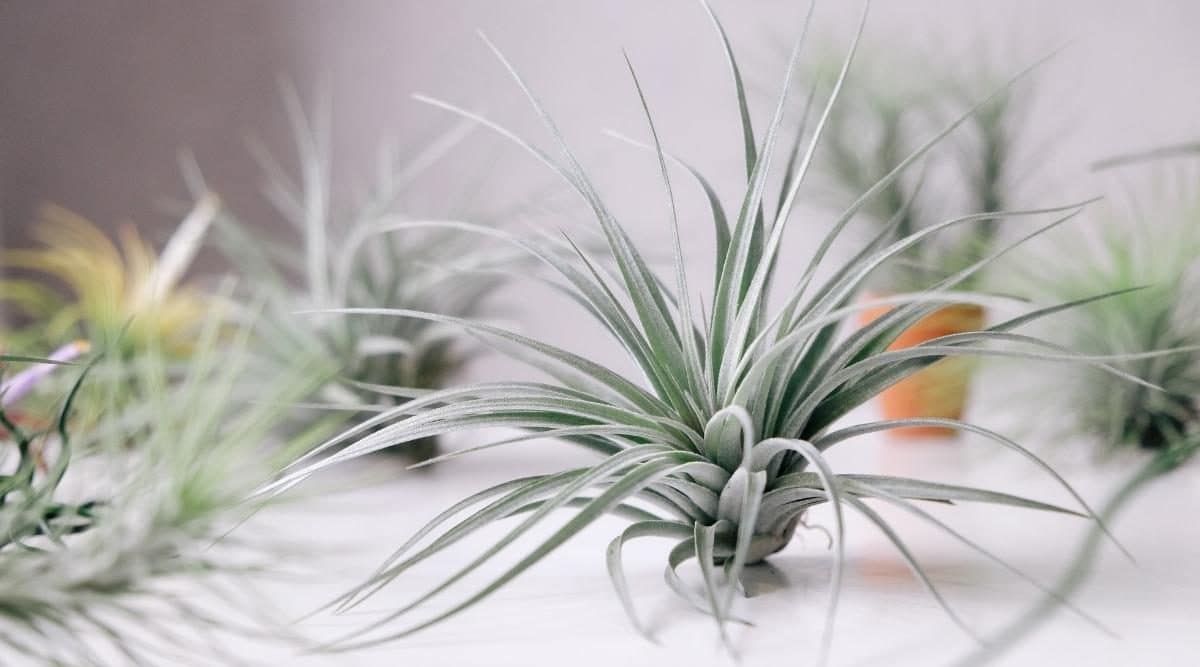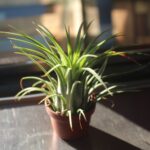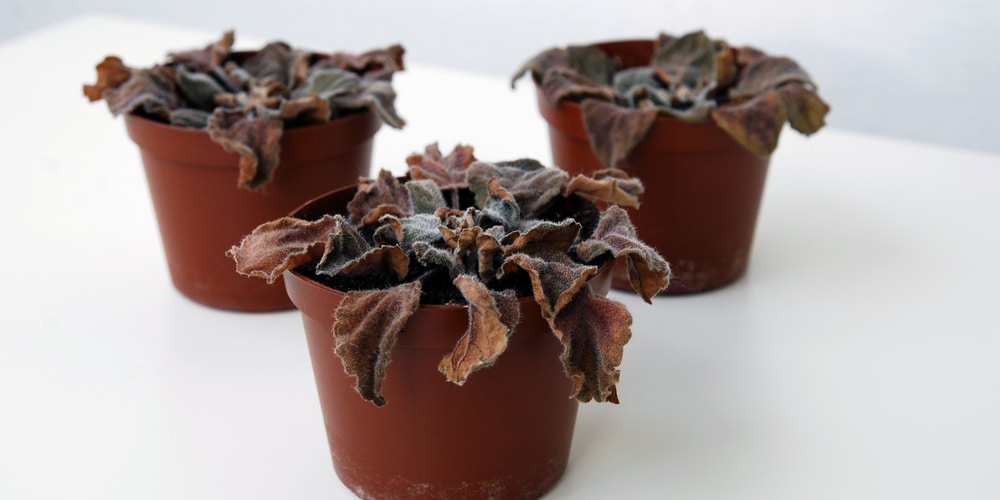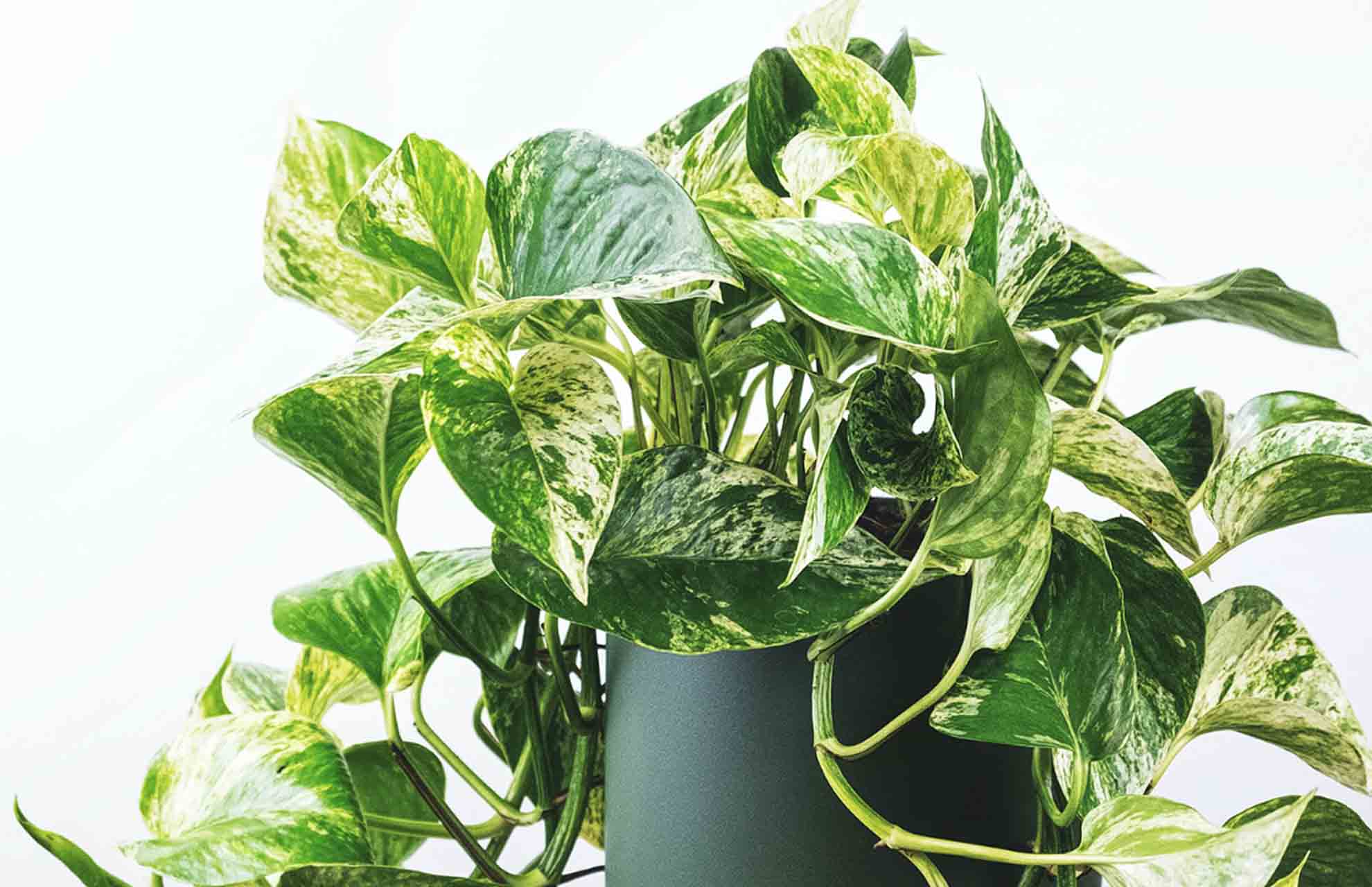Air plants come in roughly 400 different types, none of which are toxic to humans or animals. As a consequence, these plants are safe for your cats, dogs, and other furry companions. Air plants, on the other hand, have sharp and pointed leaves that might cause choking, so keep them out of their reach.
Continue reading to learn whether air plants are toxic to cats, how to keep air plants out of your cat’s reach, and what to do if your cat nibbles on your air plants, among other things.
- Are Air Plants Toxic to Your Pet Cats and Dogs?
- What Effect Do Toxic Plants Have On Animals?
- Why Do Cats Enjoy Air Plants?
- Why Keep Air Plants Away from Cats and Dogs?
- How To Keep Air Plants Away from Cats and Dogs?
- Damage To The Air Plant
- Tips On How To Keep Your Air Plants Out Of Your Pet’s Reach
- What If Cats and Dogs Nibble on Air Plants?
- Conclusion
Are Air Plants Toxic to Your Pet Cats and Dogs?
Air plants, like the rest of the Bromeliaceae family of bromeliads, are neither toxic nor dangerous to cats. So your dogs, cats, bunnies, birds, and reptiles like geckos and bearded dragons are safe with these plants. As a consequence, they’re great houseplants, especially if your cats like to nibble on foliage like houseplants.
It turns out that having air plants around cats is quite useful. They have a number of health benefits and are kept in terrariums, which keep them safe from curious paws. Air plants are also cat-friendly, which is a benefit.
Air plants come in over 400 different types, none of which are toxic to people or animals.
Some people, on the other hand, use moss to cover their tillandsias or place them in terrariums with other plants like ferns and bromeliads. When pets consume these tillandsias, as well as any other companion plant that may be detrimental to them, it is normal for them to get confused.
What Effect Do Toxic Plants Have On Animals?
Any plant has the potential to upset your pet’s stomach. Your dog, cat, rabbit, or other pet may, however, exhibit more severe reactions and symptoms if the plants are toxic.
Pets may react in mild to life-threatening ways when they consume toxic plant material. These signs would vary depending on the plant, its levels of toxicity, and how much your pet consumed.
Drooling, severe oral irritation, vomiting, diarrhea, depression and sluggishness, stomach pain, tremors, weakness, trouble swallowing, and low blood pressure are among the symptoms. Heart issues and organ damage are among the severe symptoms that, if untreated, can be fatal.
You should be aware that not all animals are affected by plants’ toxicity in the same way. Some animals might be more susceptible than others to a plant that could be toxic. For instance, common lilies are poisonous to cats but not to dogs.
You may be interested in:
- Are Bromeliads Toxic To Pet Cats
- Are Fiddle Leaf Figs Toxic to Pet Cats, Dogs, or Other Animals
- Is The ZZ Plant Poisonous for Cats, Dogs, or Other Pets
- Are Venus Fly Traps Poisonous To Cats
Why Do Cats Enjoy Air Plants?
Cats Are Known To Use Their Mouth And Tongue As A Way To Explore
One method your cat uses to explore the world is with its mouth. Similar to infants, cats have a tendency to eat objects that aren’t meant to be in their mouths as they explore the world. Perhaps the scent of your air plants attracts the cat’s attention and tempts them to try a bite.
Cats will repeatedly pursue whatever they enjoy once they’ve had a taste of it, regardless of whether it’s good for them. Although cats aren’t at risk from air plants, your cat could still be seriously injured or killed if it eats some of the other plants in your home.
Lilies and orchids, for instance, are extremely poisonous to cats and can result in vomiting and other severe reactions.
Cats Will Attack Air Plants Out Of Boredom
Another factor that could cause a cat to eat plants is boredom. If your cat is left alone for several hours a day with no other stimulation, it will undoubtedly get into a lot of things, including your air plants.
By giving your cat a stimulating environment, which might include some cat-friendly plants, you can help them avoid getting bored. Finding ways to encourage your cat’s natural hunting and climbing behaviors will also stimulate the mind.
Cats Are Attracted To Movement
Another behavior-based explanation for why your cat might be drawn to particular plants is movement. A plant with enticing extensions, like an air plant, would draw your cat’s attention.
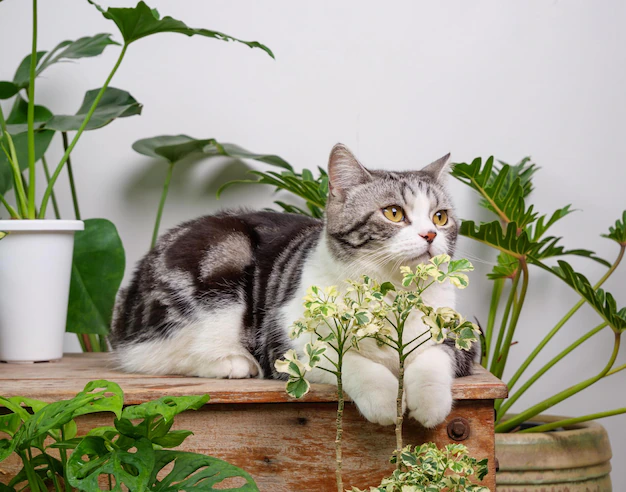
When they sway gently in the wind, those green shoots might seem incredibly appetizing to felines, creating an alluring movement. Fortunately, your cat won’t get hurt if they eat the air plant.
Why Keep Air Plants Away from Cats and Dogs?
Cats & Dogs Are At Risk Of Vomiting
If your pet consumes the moss from your air plant, he or she may vomit. Because mosses may contain harmful components in trace amounts, this is the case. The amount of toxicity, on the other hand, is usually just enough to cause gastrointestinal discomfort in your pet without causing serious harm.
If your tillandsias have other companion plants and your pet ate those as well, you may need to investigate their toxicity. You may find a list of hazardous plants for dogs, cats, and even horses at the American Society for the Prevention of Cruelty to Animals (ASPCA).
Cats & Dogs Are At Risk Of Choking
Even though air plants are not poisonous to animals and will not damage them if they eat the leaves, it is still a good idea to keep them out of their reach. This is due to the fact that air plants can still induce choking in tiny animals such as cats.
The Leaves of Air Plants Are Sharp, Stiff, Elongated, and Pointed, and Can Injure your Cats&Dogs. Air plant leaves are sharp, stiff, elongated, and pointed. As a result, if your cat eats it, it might get stuck in its throat. Playing with air plant leaves might injure your pet’s eyes, lips, and paws due to the plant’s rough surface.
As a consequence, keep your cat away from your air plants to avoid any worries or mishaps.
Harm Or Kill Your Air Plants
When your cat toys with or nibbles on some or all of the leaves on your air plants, the plant may get scared. When your air plant goes into shock, it might have a negative impact on its general health.
The plant will eventually perish as a result of constant interruptions and harm. It’s wise to keep your plant and animal buddies apart to keep them both safe.
How To Keep Air Plants Away from Cats and Dogs?
- Air plants can be hung on a wreath, live frame, or driftwood
Hang your air plants from a wreath, a piece of driftwood, or a live frame constructed of chicken wire. This will not only keep your air plants secure and out of reach of your dogs, but it will also create a stunning wall decoration.
- Set your plants in a glass terrarium and place them on a high shelf
Choose an open terrarium for air plants since they require sufficient air circulation. However, use a globe with a smaller opening so your pet cannot get the plant. Or position it in an area where your pet is less likely to knock it off and break the glass. This implies that a terrarium is out if you have an inquisitive cat who enjoys climbing on shelves and in high locations.
- Your air plants should be hung
You may hang your air plant with nylon string, fishing line, or wire. Hang hooks from the ceiling or above the window. With your tillandsias on the other end, tie the pieces of chopped wire or string to these hooks. Air plants can also be hung from tree branches in your landscape. Simply make sure your plants are hanging at a height that your pets, even if they jump, cannot reach.
- Use Smells That Cats Hate
Cats’ noses are extremely strong. Normally, a cat will use its sense of smell to its advantage, but now, your cat will do the same. Citrus and chili are two odors that can be used to frighten cats.
By surrounding your air plant with the peels of citrus fruits, such as lemons, you can attempt to make it unattractive. Citrus smells are powerful, so the scent will be powerful as well. Citrus oils shouldn’t be used because they contain compounds that could be harmful to cats.
Around your air plants, you can also sprinkle cayenne pepper. A different approach is to combine water with cayenne-based flakes or hot sauce and spray it on your plants instead of using cayenne pepper to be sprinkled because it may not look the best.
- Choose Your Surrounding Plants Wisely
This may seem obvious, but if you surround your air plant with plants that your cats dislike, they won’t likely bother to look at it.
The fact that your air plants thrive when they are present with other plants is the best part. Try putting them next to plants that cats dislike; rosemary is a good example. Cats are likely to avoid these plants because they dislike the scent of rosemary.
In addition, cats are deterred by factors besides smell. With their thorns and spikes, cacti, for instance, will deter cats.
Make sure the plants are safe for cats before selecting them as air plant companions. If you’re unsure, you can always check the ASPCA plant toxicity rating.
- Cat Spray And Other Devices
Spray your plant leaves with organic cat spray in the belief that cats have keen senses of smell. Make sure your veterinarian has approved the cat spray before purchasing.
An alternative is to combine one part vinegar with three parts water to create a plant spray.
Besides cat spray, there are other over-the-counter solutions. The best tools for repelling any small to medium-sized animals are things like ultrasonic animal repellers. The fact that it is non-toxic and emits no chemicals is the best feature.
Damage To The Air Plant
Your air plant is now looking worse for wear because your pet managed to get a hold of it. If the air plant survives, the pet will be fine. Here are some suggestions to improve the plant’s chances of survival.
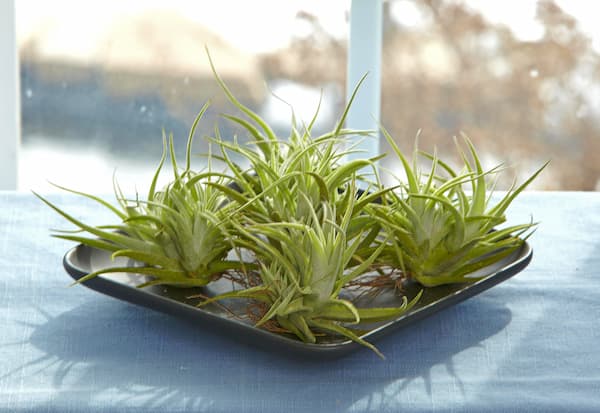
- Calculate the plant’s level of damage. It might have a chance to survive if the majority of the leaves and bases are still present. The leaves are necessary for photosynthesis as well as for absorbing moisture and nutrients. The base serves as the plant’s structural support. If too many leaves are damaged, the plant might not be able to perform its essential tasks.
- With some gardening shears or scissors, remove any leaves that are beyond repair or damaged, then count how many still function. Your plant might have a chance to survive if you take good care of it.
- Give your plant the proper watering and fertilizing routine after that so that it has everything it needs to grow and regenerate. For the best maintenance advice, visit our page on caring for air plants.
- Additionally, it would be a good idea to relocate the plant away from the curious animals.
- Give your plant some time. Since air plants grow slowly, the results of your care might not be noticeable for several weeks or months.
You will notice that the plant is dry and shriveled, and it will probably fall apart if your attempts to revive it are unsuccessful. We hope you are not the victim of this!
Tips On How To Keep Your Air Plants Out Of Your Pet’s Reach
Here are some suggestions for keeping your air plants secure and out of your pets’ reach:
- Place a glass terrarium high on a shelf to display your plants in
Choose an open terrarium for your air plants because they require good air circulation. To ensure that your pet cannot access the plant, choose a globe type with a smaller hole.
Or put it somewhere your pet won’t be as likely to knock it off and break the glass. If you have a curious cat who enjoys climbing on shelves and other high places, a terrarium is not a good idea.
- Hang your air plants
To hang your air plant, you can use a wire, nylon string, or fishing line. Put hooks on the window sill or on the ceiling. Put your tillandsias on one end of the cut pieces of wire or string, and tie them to these hooks.
You can also hang your air plants down tree branches in your garden. Just make sure that your plants are suspended at a level that even if your pets jump, they cannot access.
- Attach your air plants to a wreath, living frame, or a piece of driftwood
Hang your air plants from a wreath, a piece of driftwood, or a living chicken wire frame. This would make a lovely wall decoration in addition to keeping your air plants secure and away from your pets.
What If Cats and Dogs Nibble on Air Plants?
Examine the damage.
Check to see whether there are still enough leaves on your plant and if the base or main stem is still intact. Your plant may have a tiny chance of surviving if it has been crushed and all of its leaves have been removed. You can, however, continue to wait and see what occurs.
Trim all of your plant’s damage
Using a pair of garden shears, cut off the tips of the broken leaves. You won’t need to take the leaves out as long as they’re still tied to the tillandsia’s core.
Give your air plant more attention
Give your plant the same attention you’ve always given it. Also, be sure to give it enough water so that it will recuperate faster.
Move the new location of the air plant
After you’ve ensured that both your cat and the air plant are safe, you should consider transferring your plant to a new area to avoid your cat ingesting the plant again. Choose a location where your cat and other furry pals will not be able to reach it.
This can include displaying it in a glass terrarium, high on a shelf, hanging out of reach, or on live exhibits, such as a piece of driftwood. However, because each cat is unique, owners must experiment to see which choice deters their cat the most from damaging their air plants.
Conclusion
There is no evidence that air plants are toxic to people or animals. That is why they make ideal houseplants for pet owners. However, given the form and texture of their leaves, they might still constitute choking dangers. And, unfortunately, while your tillandsias are not toxic for your pets, your pets may not be safe for your tillandsias.
As a result, you must exercise caution and keep your air plants out of reach of your dogs. Overall, keeping your air plants away from your cats is easiest accomplished by hanging them, placing them in a glass terrarium, or exhibiting them on driftwood.

